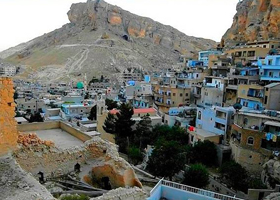Jim Davila has shared two articles on modern Aramaic-speaking communities in Ma’loula (Western Neo-Aramaic) and the Jordan Valley originally from Kurdistan (which would probably make it some form of Hulaulá/Galiglu, although they’re sparse on details as to what part of Kurdistan they came from).
Where Ma’loula is “under attack” in Syria due to, of all things, its writing system (the orthography they chose was based off of “Hebrew” letters and the Tiberian Vowel system which was deemed “too Hebrew” despite the fact that both were developed originally by Aramaic speakers), Hulaulá and other Jewish Neo-Aramaic dialects are actually “under attack” due to the spread of Modern Hebrew (which is quickly replacing them) and lower birth rates among its speakers.
—
These recent news articles have actually inspired me to step up my daughters’ Aramaic learning a bit more. At home I speak to them in English and re-purposed Galilean Aramaic (more like the “Kthobonoyo of Galilean” as it were) and towards that purpose I’ve begun work on a series of workbooks and other educational materials for them.
With any language, the three rules of keeping it “alive” are as follows:
1) “Practice, practice, practice” – Reading, writing, and reading, and writing. Did I mention reading and writing? 🙂
2) “Unless you use it, you lose it.” – Specifically conversing with others, expressing concepts and thinking. Using a language is like working your body. If you don’t walk enough, your legs become weak. If you don’t use a language enough, you’ll find it harder to express yourself in it.
3) “Evolve or die.” – A language that does not evolve and change over time is stagnant. This is especially tricky with trying to teach a Classical dialect as a living language, but if you can’t coin words or phrases to express new concepts, then you can’t use it in everyday life. I’ve been very careful in choosing vocabulary, sticking to Classical choices wherever possible, and when I have to outright coin a word, have a system in place to facilitate it, and only when that fails adopting a loan word. It feels very “French” in some regards, but it works fairly well.
Speakers of Neo-Aramaic dialects throughout the world are faced with implementing these rules daily, and unless they’re able to overcome these hurdles, they may alternately face the sad loss of their own culture and mode of expression.
Peace,
-Steve
